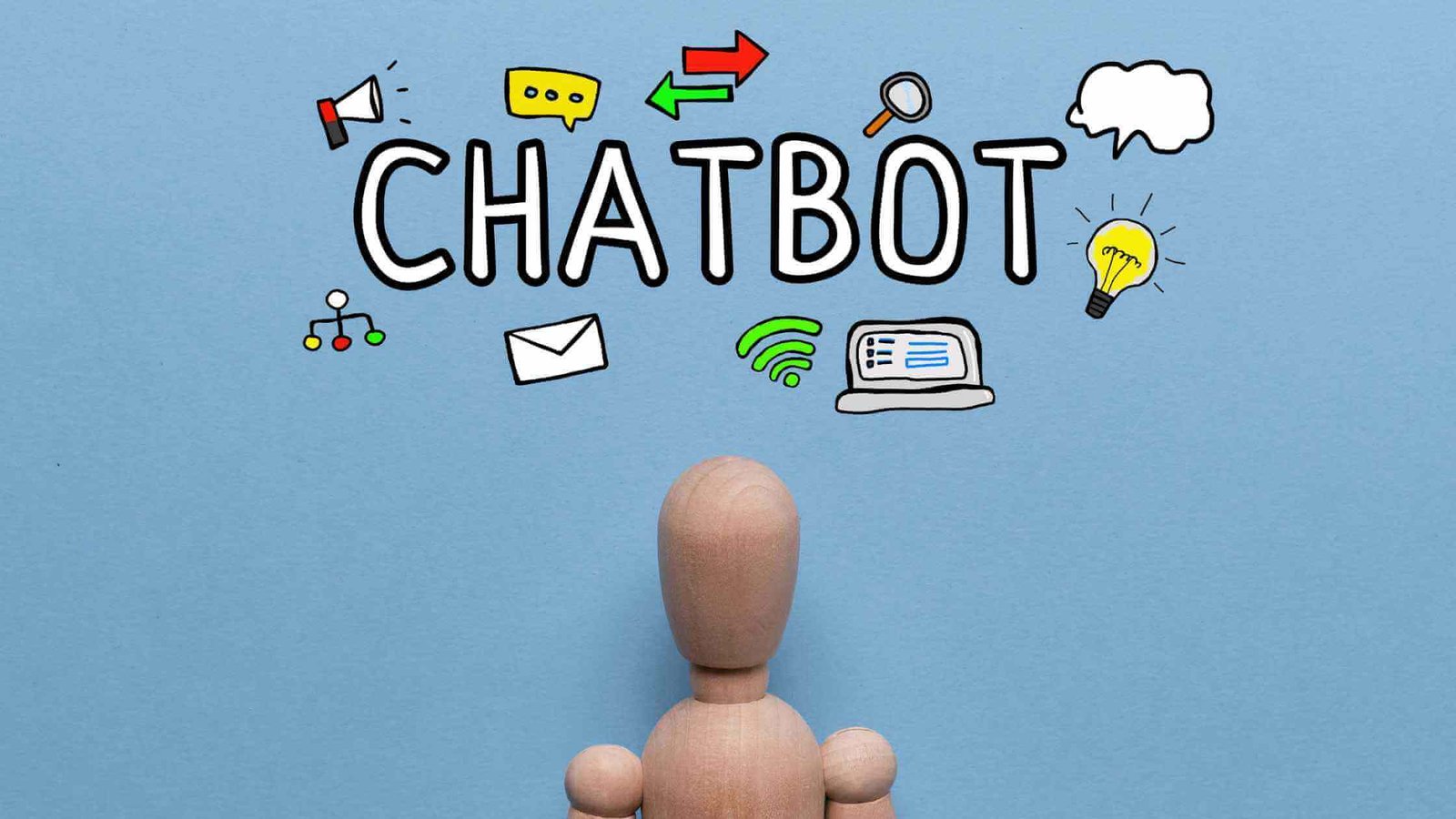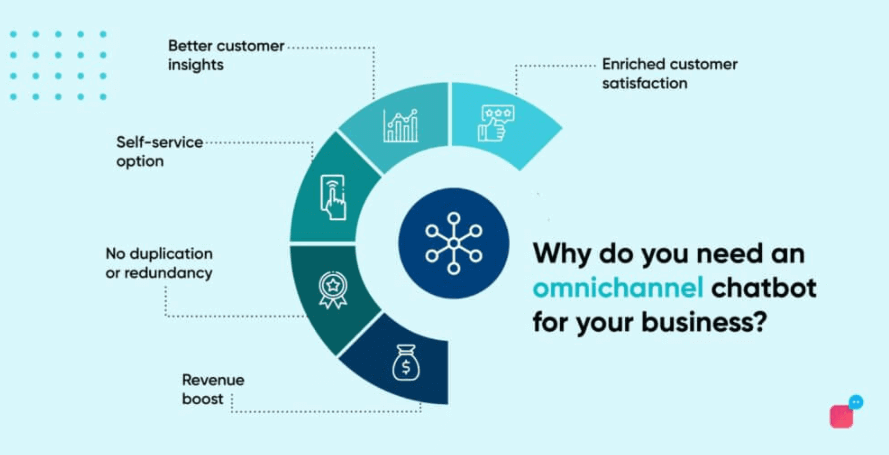Finding new customers is a much more baffling task than retaining existing ones. That’s why companies do their best to keep clients satisfied with services or products. So, customer experience should be at the center of attention for businesses of all kinds.
Ensure your website loads fast enough, arrange user-friendly website navigation, and leverage modern technologies, such as artificial intelligence (AI). But what is AI?
If you ask an ordinary user about the meaning of AI, they are likely to tell you about “something smart”.
Most people associate AI with Tesla cars, voice assistants, face recognition systems, smart refrigerators, and robots. Indeed, all those things, one way or another, are created as a result of merging several technologies:
Natural language processing;
Deep learning;
Machine learning;
Machine perception.
And all of them create a concept of artificial intelligence. However, the impact of this game-changing technology goes beyond the creation of smart robotic systems for IT giants.
AI surge and consequent popularity encourage many vendors and companies of all sizes to opt for this opportunity. They leverage the capability of intelligent software and hardware to make their services and products more innovative.
The customer service industry is not an exception. Since 40% of consumers make no reckoning whether a computer or human being lends them a helping hand, the number of companies using chatbots to answer customers’ questions is growing exponentially.

(in billion U.S. dollars) Market size and revenue comparison for artificial intelligence worldwide from 2018 to 2027 - Source
AI in customer support is so noticeable that some experts state that 85% of all online interactions occur without human participation now.
In this article, we will learn whether AI is really intelligent, how chatbots based on artificial intelligence work, and why this tech appears to become the new reality of customer service.
What Do We Consider Intelligent?

Artificial intelligence is a technology that makes it possible for machines or computer systems to simulate human behavior processes learning from experience and adjusting to new inputs.
In other words, the entire concept of AI is founded on mimicking human cognitive abilities. So, software/hardware can be considered as “intelligent” as long as it:
“perceives” and “understands” the current environment/context;
Can make decisions based on both previous experience and understanding;
Can learn from training and experience;
Uses so-called “common sense” in equivocal or vague situations.
There is no denying that AI-based systems are becoming more and more similar to natural human behavior.
As such, the inability to identify human emotions, recognize the emotional coloring of a message, and react to them respectively has remained an impassable barrier for developers for a long time. However, this challenge has been overcome.
Let’s take Cogito, AI-based software, as an example. This software is earmarked for helping customer service employees to boost their effectiveness by providing opportunities for empathic listening and inviolate communication in every conversation.
Cogito perceives and analyzes the tone of voice, word frequency, and pitch. It displays a smart notification on the customer service agent’s PC advising them on a better behavior:
Lower the voice;
Speak slowly/faster;
Sound more amiably;
Start or stop talking.
You can see on the screenshot how this intelligent agent works.

Screenshot taken on the official Cogito website
The constant growth of AI in customer support allows organizations to get access to a wide array of tools and resources. They help improve and transform their customer service processes and interactions.
AI-Based Chatbots: A Way to Smart Customer Interactions
The first chatbot, ELIZA, was developed in 1966 and made a path for the evolution of intelligent assistants. Things have changed since then.
Indeed, AI-powered chatbots used as virtual agents that can manage a great variety of tasks have revolutionized the way companies interact with their clients.

Why do people love chatbots?
First of all, they are fast, reliable, and always there when a client has an issue. Besides, they provide a better customer experience, enhance digital marketing strategies, and significantly save the agent’s time by resolving the most common problems.
AI-based chatbots are considered to be the next step of technology evolution. They are powered by two technologies: machine learning and natural language processing. They boost service agents’ productivity by imitating a conversation in a natural, human way.
As for now, there are many platforms that help companies to build their AI-powered chatbots. These virtual assistants can perceive people’s intents without keyword matching and steadily learn to provide relevant and accurate answers to the customers’ questions.
However, some businesses prefer individual solutions rather than applying out-of-the-box ones. Salesforce introduces their own AI-based Einstein Bot that can be tied to various Salesforce processes and objects, including:
Historical data;
Customers’ profiles;
Workflow.
But it may be challenging for the average website owner to deploy the tech to their site, educate the chatbot, and put it onto the stage. As such, to leverage this AI-based technology, solid coding skills and Salesforce knowledge are required.
Here is the interface to set up the Einstein Bot to understand human utterances.

10 Reasons to Use AI for Customer Support
1. Dealing with FAQs
Chatbots are primarily designed to answer the same types of customer questions. What separates a human from a chatbot?
A person can solve more complex problems, search for new markets and improve relationships with existing customers. Can you imagine how much time does answering monotonous questions eat up?
How can I book a ticket?
What’s your closing time?
Do you work on weekends?
You can entrust all these questions to an automated system. And that’s where AI in customer support and chatbots step in to automate straightforward, recurring issues.
These questions are predictable, so you can set up rules for a bot to react. It will respond according to the scenarios.
If the bot can’t resolve the issue in one touch, it can direct it to customer support specialists. And they will already know the track record. Hence, a customer will receive more meaningful support.
The Victoria’s Secret chatbot is in the screenshot below. It lets you select the request type, such as order status, order modification, deals, or something else.

2. Mapping out Customer Behavior
People have different behavioral patterns depending on the region, culture, gender, and environment. We leave massive data behind, and only one-third of it is worth processing.
It’s a challenging task for a human. But there’s good news that AI in customer support can mine data from the customer journey and take the burden off human shoulders.
AI tools employ sentiment analysis for reviews, tracking past sales, and sifting through social media interactions.
The details can tell you about customer expectations; What are the most desired products for the segment? How much money does this segment usually leaves in the store? What strategies encourage them to spend the extra money?
The system divides the audience into clusters with similar patterns. And the best part is that they forecast the demand and supply for you to display personalized content to the targeted regions.
The prominent example of using ML to uncover emerging trends is Ben & Jerry’s case. The company analyzed numerous songs to see that 50 contain the “ice cream for breakfast” phrase. It used this finding to create cereal-flavored ice cream.

3. Accelerating Response Speed
Response time denotes the speed to resolve the customer query. It’s the period from raising an issue to addressing it by a support team member.
Response time is a metric in customer support and service for tracking and improving performance. If the response is quick, clients will feel valued and appreciated.
CMO council found that the most important attribute of a good customer experience, according to the customers’ themselves, is a fast response time.
Why can response time slow down? It happens due to manual data processing, follow-up emails, long wait periods, call transfers, etc.
Do you feel the need to quicken the response time? Employ chatbots to speed up problem resolution. Automate responses with the help of templates and pre-programming.
Chatbots provide faster real-time responses and are easy to deploy on website landing pages, mobile apps, or messaging apps like Facebook Messenger. They draw data from the knowledge base and produce the most relevant answer.
Chatbots also encourage self-service support. It means users can find answers on their own with the help of an interactive and intuitive interface. The AI assistant identifies the intent and makes more inquiries to provide a pleasing customer experience.
A chatbot on the Edible Arrangements website takes a step further and shows you anticipated requests before hitting the Enter button.

4. Using Sentiment Analysis for Business Improvement
As I’ve mentioned before, AI in customer support is able to understand the emotional coloring of a review or social media comment. It’s possible thanks to sentiment analysis.
Sentiment analysis is about deciphering customers’ feelings (positive/neutral/negative).
AI tools scan thousands of reviews to demonstrate whether customers are satisfied with your company, customer service, and product price and quality.
How is this helpful?
First, knowing what your customers think about the brand helps you find weak spots. You can eliminate frictions and return buyers. Make even negative reviews your source of learning.
Second, you can’t track all reviews manually. AI tools streamline this task and provide the results to the team for further management.
The result is improved quality, competitiveness, and customer satisfaction. And it leads to generating more loyal customers and easier customer retention. Below is the Brand24 tool, showing you the number of mentions and their emotional attributes.
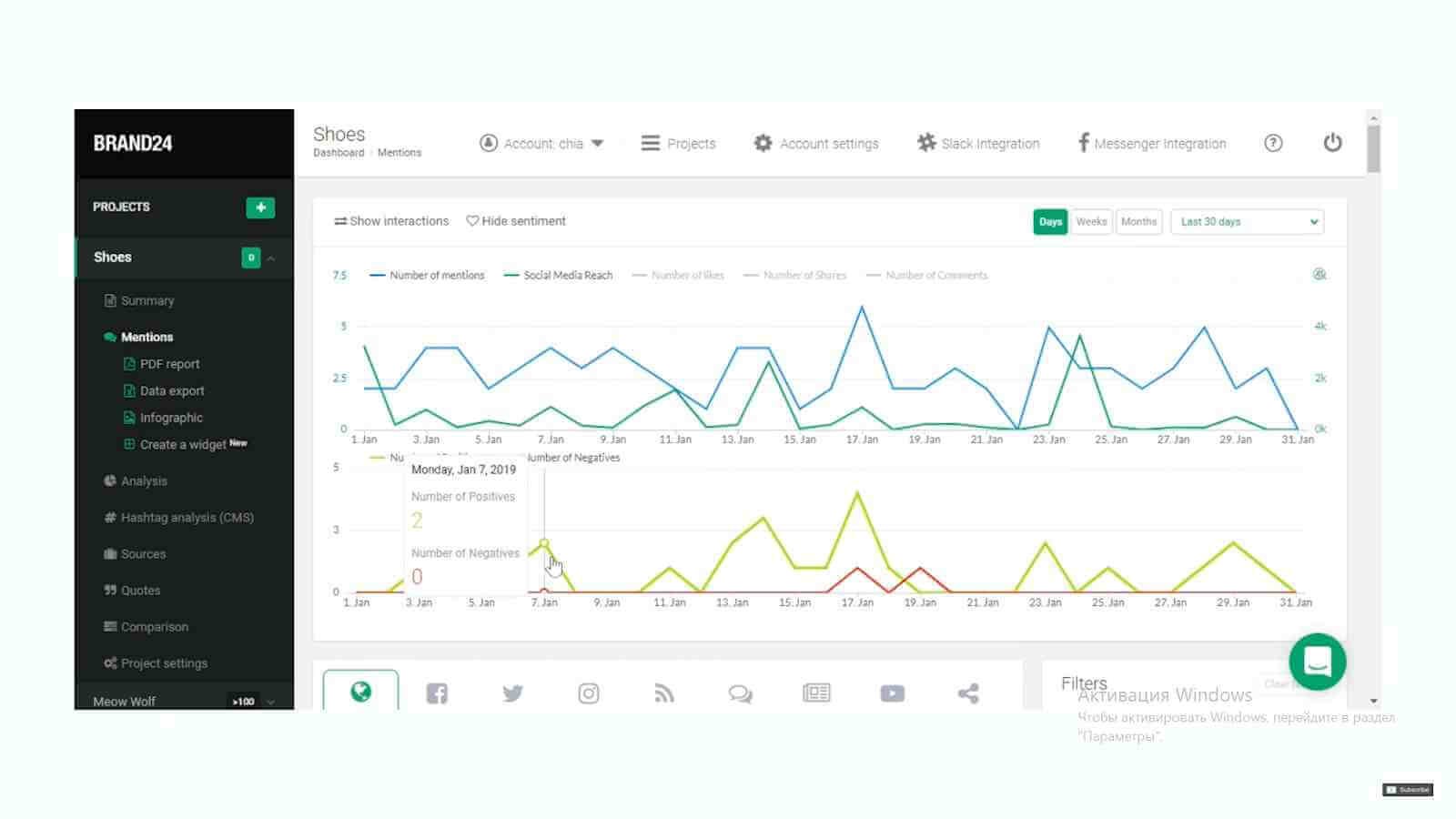
5. Expanding AI in Customer Support to the Global Scale
Chatbots are superior to humans in the way that they take no notice of clients’ time zones and languages. Utilize multilingual chatbots.
They operate equally effectively whether you choose English, Italian, or Chinese. They ask users about their preferred language from the outset or scan input words to figure out the used language.

Multilingual chatbots are essential for international brands. Even if you don’t cater to the global audience, you should remember that scaling a company will come sooner or later. That’s when you’ll start thinking of multilingual assistance.
Why are English-only chatbots may hamper your customer service?
Although English is a lingua franca for different cultures, there are only 1.35 billion people in the world speaking English as a native or second language.
It means other users may find it challenging to describe their problem in a language they barely speak. It leaves them discouraged to deal with your business.That’s why people prefer their native language. And you need a multilanguage chatbot to ensure your business prosperity.
Chatbots can facilitate communication in a distributed global support crew and satisfy your customers. Here’s what iMile achieves by implementing a chatbot, comprehending English, Arabic, and Spanish.
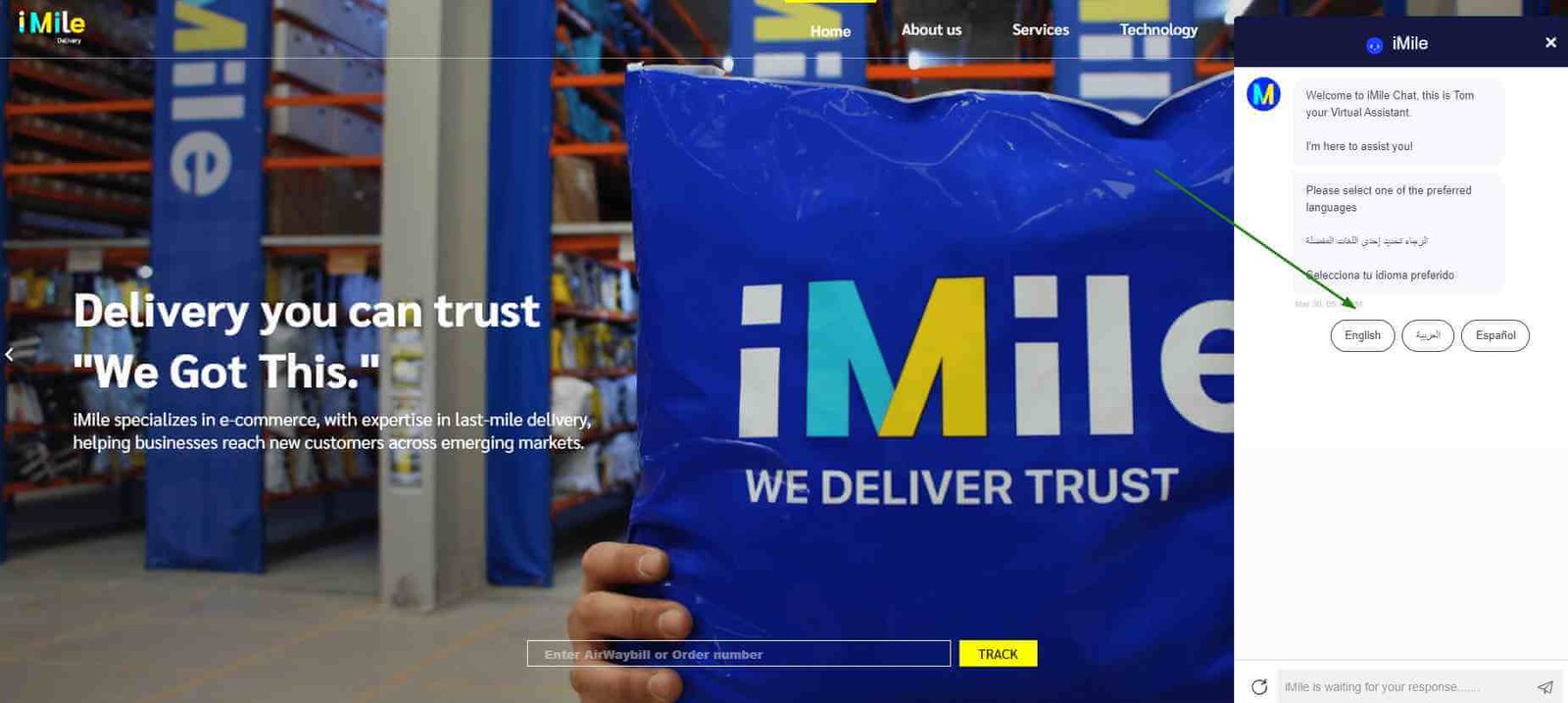
Screenshot taken on the official iMile website
6. Mitigating Traffic Spikes and Fluctuations
Chatbots need no rest and sleep. For this reason, they can handle customer requests when your agents aren’t available, such as on weekends, at night, or during the holidays.
Chatbots can also reduce the effects of regular turnover in customer service. And they can fill in for your team members when the company is short-staffed.

For example, you don’t need to cover so many issues during regular days as you do on Black Friday or other high-traffic holidays. Chatbots deal with such high-volume times. And they’re a cost-effective option, preventing you from hiring extra seasonal help.
You reduce the stress on employees and save money on recruitment and training. Due to seasonal trends, it becomes even more significant in eCommerce with fluctuating customer behavior.
Chatbots can also decrease the cost per query. It happens when a consumer engages with a chatbot before speaking with an agent.
The constant development of AI in customer support paves the way for human-like communication powered by NLP. So customers won’t be aware that they communicate with a program.
7. Integrating with a CRM
Data input is similar to answering questions. Repetitive, unpleasant, and monotonous. And what we get as a result is mistakes, duplication, and other mismatches.
Dun&Bradstreet, an American provider of data and analytics, shares in their report that 91% of data in CRM needs refilling, 18% have their copies. And every year, 70% of the data becomes inaccurate. And you know the cost of insufficient data and incorrect predictions, don’t you?
Another AI-powered solution benefit is the ability to take care of it. Data entry combines several technologies:
image recognition;
document capture;
speech recognition.
To automatically insert it in the correct format, AI-powered tools extract customer data from SMSs, calls, emails, images, and other sources. An AI-integrated CRM system can clean existing data and look for missing information in other systems. If there are some errors, it notifies users and asks them to fix mistakes.
8. Spotting Customer Support Agents’ Burnout
In pursuing profit and customers, you may not notice how employees overburden themselves. It leads to frustration, staff turnover, and additional costs for finding their substitutes.
You can ignore it when one employee leaves. But what will you do when the department is left without specialists? In such cases, AI helps managers predict employee burnout.
Take the Yva.ai platform. The intelligent algorithm detects the earliest signs of irritation. And it happens even if an employee is unaware of the decline in productivity.
The tool sees the changes in the employee behavior, tracks their speed to respond to colleagues, and sends out weekly polls to evaluate their state.
And that’s what I think will become crucial for businesses who care about their staff. Below is the Yva.ai report on the issue between an employee and a customer an executive needs to address.

Screenshot taken on the official Yva.ai YouTube channel
9. Predicting Customer Churn to Take Preventive Measures
Customer churn, or customer turnover, shows in percentage how many clients stopped doing business with the company.
Customer churn happens when you fail in customer retention. As retaining and acquiring customers is tough, you need to reduce customer churn at all costs. AI in customer support helps you foresee client churn and identify the primary cause to craft the rescue plan.

Calculating Churn Rate
For example, you can implement personalization (which is also attainable with AI). Personalization depends on client data and includes:
Addressing people by their names;
Showing relevant content for a particular audience segment;
Providing special offers based on customer behavior.
A chatbot greets customers, inquires about their needs, and generates personalized recommendations in line with their preferences and previous purchases.
It’s as if you’re shopping with a personal assistant. That’s the working principle of Levi’s chatbot Indigo. If you want to find a product, the chatbot will follow up with details and present the best matching product.

It ensures brand engagement and a positive customer experience, boosting the chance of conversions. How can you make better use of customer data?
You can improve the chatbots with upselling or cross-selling capabilities. The system will suggest related things by leveraging the details provided by consumers.
10. Seamless Functioning Across Numerous Channels
A modern business should provide an equally high level of service through a multitude of channels. Customers may get acquainted with a product’s features on Facebook, send an email to request more detailed information, and contact the business through a phone call.
How do you incorporate all communication channels? It requires a solid omnichannel customer strategy. Note that it’s not about just being present on a channel. It’s about adapting the unique approach to each client to recognize them without asking the same questions.
As a result, omnichannel chatbots emerged. These AI-enabled assistants meet customers on every channel, recognize them, and offer consistent and personalized user support.
With various low-code chatbot builder platforms, you can easily customize the solution on your website. You design a chatbot once and deploy it across numerous channels. It supports emails, websites, mobile apps, messengers, and voice assistants like Alexa and Google Home.
During the communication process, the chatbot acquires data to deliver customized conversational experiences to customers in real-time and keeps the context of the original chat. Customers can switch from one channel to another without having to start over.
The Sephora Reservation Assistant is such an example. The bot connects the online and offline sales process by allowing customers to book an appointment in the nearest Sephora store. How does the chatbot find the store?
It collects the details, such as postcodes and cities. After the confirmation, it sends an email to the customer, enabling the booking process from social media.
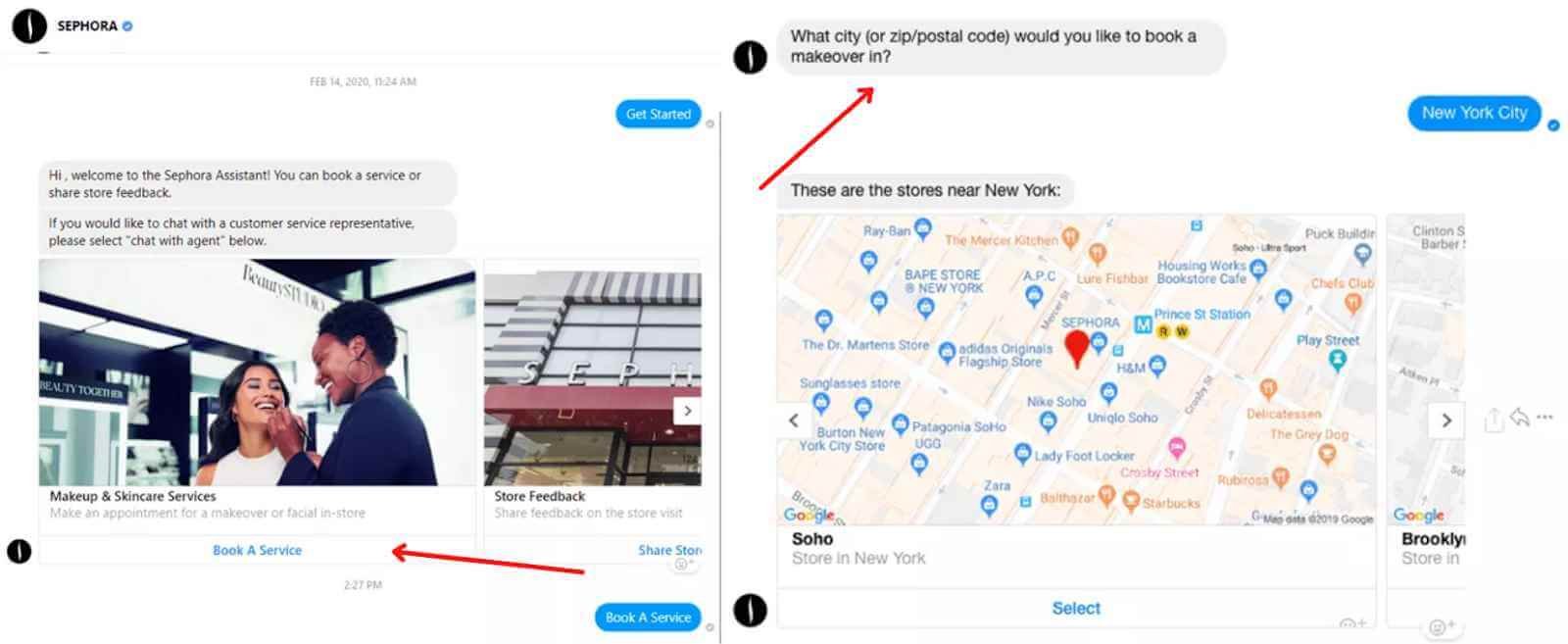
How Secure Are Artificial Intelligence Chatbots?

The whole concept of AI in customer support is based on data consumption. It is used for learning as well as for verifying users and providing services. It creates a locus for cyberattacks because of that.
For instance, it would need access to personally identifiable information to process an appointment verification or a claim.
AI-bots are vulnerable in terms of security. Without steadily monitoring the chatbot’s interactions both with internal systems and customers, vulnerabilities could remain unaddressed or unnoticed.
AI-powered chatbots use three methods to ensure security:
- Authenticated tokens to verify user identity;
- Two-factor authorization;
- End-to-end encryption.
AI-powered Chatbots: What to Expect?
What can we predict relating to bots and artificial intelligence collaboration? AI and other associated technology such as natural language processing continue to proliferate. So we can expect bots to improve over 2024 and subsequent years.
As for now, lots of big companies build deep neural networks to make chatbots smarter and be more like humans with speech recognition systems and voice chatbots.
The technology is still not perfect and has numerous challenges to overcome, including the necessity to conquer these factors:
- Various pitches of people’s voices;
- Background noise;
- Varied accents and dialects.
Nevertheless, conversational bots will likely be a dominating trend in technical support and beyond. This technology will increasingly take root in our daily lives, becoming an integral part of it.
As such, some experts suppose that conversational chatbots will replace search bars in our browsers soon.
AI-based conversational bots are also predicted to be recruited into various call centers where the agents provide technical support and cope with customers’ requests.
Besides, they can help companies reduce costs by up to 30% because using a well-trained bot allows hiring fewer people to serve customer needs and receive calls.
Conclusion
While you may think that AI is something abstract, it’s becoming more practical each day. So what is the primary purpose of AI in customer support? It aims to automate day-to-day manual work to free up employee time for analytical tasks and boost productivity.
The top trending AI use cases include:
- Chatbots for customer support;
- Voice and image search;
- Tools for social media, such as automated publications, content assessment, and determining the best time frame to publish your posts;
- SEO tools for website analysis, keyword research, and smart tagging.
Artificial intelligence has already made a big step forward from simple queries. It provides advanced perception and predictive analytics for making human-like interactions possible.
Further Reading :
